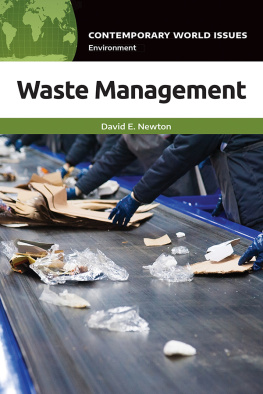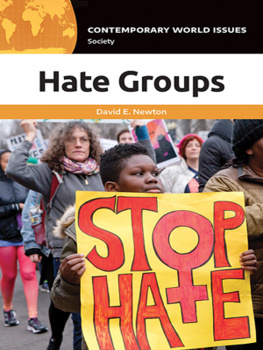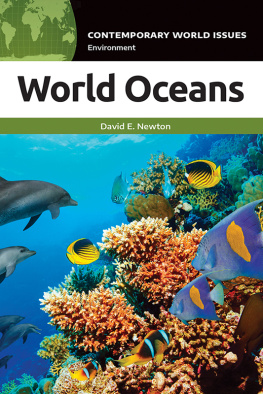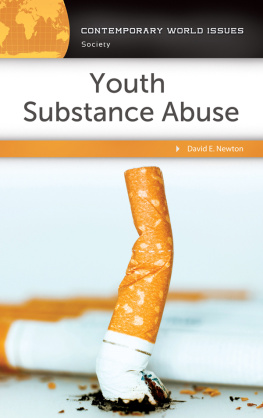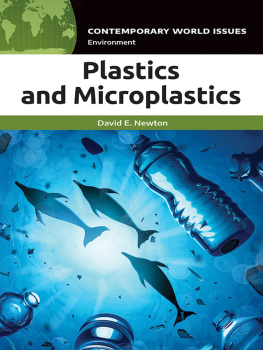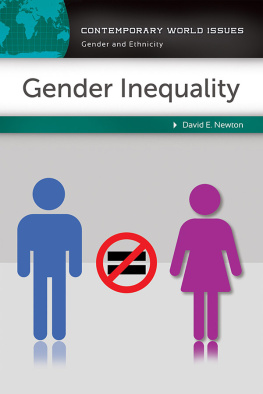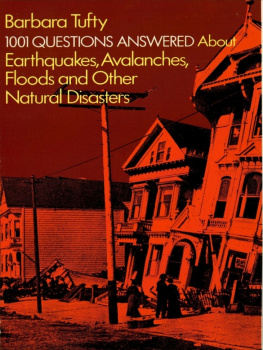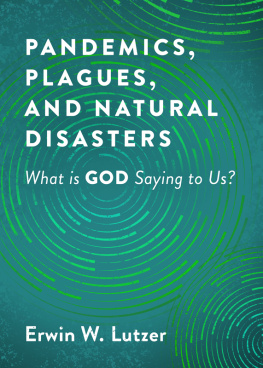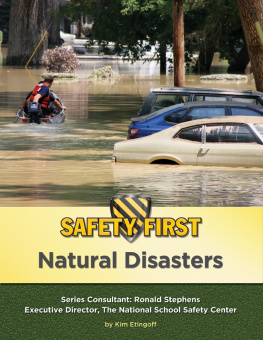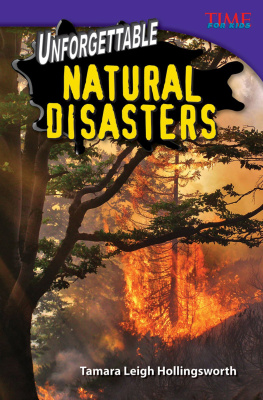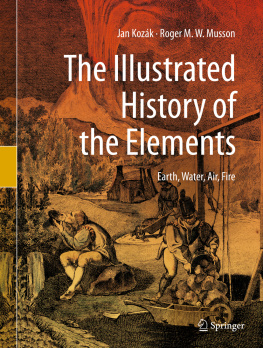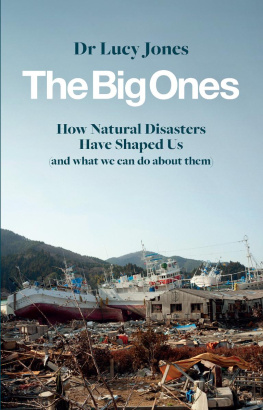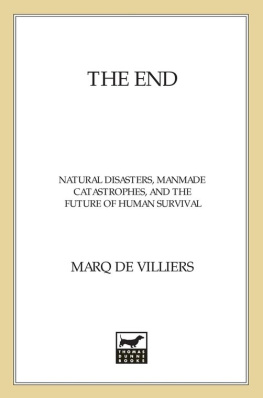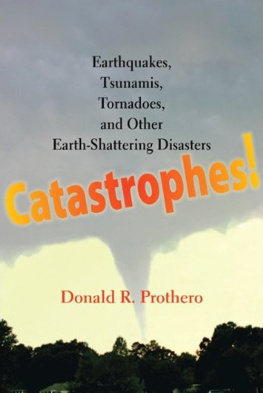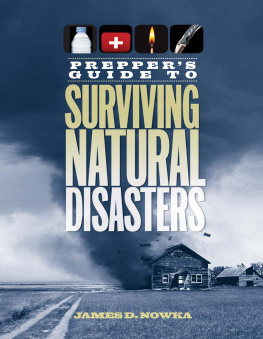Natural Disasters
Recent Titles in the
CONTEMPORARY WORLD ISSUES
Series
Steroids and Doping in Sports: A Reference Handbook, second edition
David E. Newton
Religious Freedom in America: A Reference Handbook
Michael C. LeMay
Endangered Species: A Reference Handbook
Jan A. Randall
STDs in the United States: A Reference Handbook
David E. Newton
Women in Sports: A Reference Handbook
Maylon Hanold
Robots: A Reference Handbook
David E. Newton
Homeland Security: A Reference Handbook
Michael C. LeMay
The Opioid Crisis: A Reference Handbook
David E. Newton
Abortion in the United States: A Reference Handbook, second edition
Dorothy E. McBride and Jennifer L. Keys
The Youth Unemployment Crisis: A Reference Handbook
Christine G. Villegas
Transgender: A Reference Handbook
Aaron Devor and Ardel Haefele-Thomas
Eating Disorders in America: A Reference Handbook
David E. Newton
Books in the Contemporary World Issues series address vital issues in todays society such as genetic engineering, pollution, and biodiversity. Written by professional writers, scholars, and nonacademic experts, these books are authoritative, clearly written, up-to-date, and objective. They provide a good starting point for research by high school and college students, scholars, and general readers as well as by legislators, businesspeople, activists, and others.
Each book, carefully organized and easy to use, contains an overview of the subject, a detailed chronology, biographical sketches, facts and data and/or documents and other primary source material, a forum of authoritative perspective essays, annotated lists of print and nonprint resources, and an index.
Readers of books in the Contemporary World Issues series will find the information they need in order to have a better understanding of the social, political, environmental, and economic issues facing the world today.
CONTEMPORARY WORLD ISSUES
Natural Disasters
A Reference Handbook
David E. Newton
Copyright 2019 by ABC-CLIO, LLC
All rights reserved. No part of this publication may be reproduced, stored in a retrieval system, or transmitted, in any form or by any means, electronic, mechanical, photocopying, recording, or otherwise, except for the inclusion of brief quotations in a review, without prior permission in writing from the publisher.
Library of Congress Cataloging in Publication Control
Number: 2019940817
ISBN: 978-1-4408-6761-3 (print)
978-1-4408-6762-0 (ebook)
23 22 21 20 19 1 2 3 4 5
This book is also available as an eBook.
ABC-CLIO
An Imprint of ABC-CLIO, LLC
ABC-CLIO, LLC
147 Castilian Drive
Santa Barbara, California 93117
www.abc-clio.com
This book is printed on acid-free paper 
Manufactured in the United States of America
Contents
by Wendy Awai-Dakroub
by Trudy E. Bell
by Sean Ernst
by ChrisAnn Silver Esformes
by Madeline Clark Frank
by Eloise Merrifield
by Chloe Olewitz
by Lane Ponsart
By the middle of 2018, the following events occurred:
- More than 100 wildfires destroyed an estimated 1.6 million acres of vegetation in the American West.
- Heavy rains in Japanmore than three times the normal amountsproduced flooding, landslides, and mudslides that killed more than 100 people and forced the relocation of more than 2 million individuals.
- The eruption of Mount Fuego in Guatemala directly affected the lives of an estimated 2 million people, including at least 33 deaths.
- An effusive (nonexplosive) volcanic eruption occurred on the Big Island of Hawaii on May 3. The event was followed by 2 major earthquakes and more than 500 minor earthquakes in the succeeding months.
- The first tropical storm of the year hit the Florida Panhandle, resulting in two deaths, the loss of power for more than 20,000 homes, and flash flooding in North Carolina.
- Dust storms in northern and western India resulted in more than 125 deaths and uncounted numbers of livestock, along with the destruction of homes and electrical generating facilities.
- An earthquake in Hualien, Taiwan, caused $21 million in property damage.
- Heavy windstorms across Northern and Western Europe caused more than 13 deaths, caused extensive property damage, and interrupted normal transportation systems.
- Mudslides caused by heavy forest fire damage the previous year resulted in 21 deaths, the destruction of 129 homes, and damage to 307 additional structures. (All examples are from Lauren Slocum. 2018. The Worst Natural Disasters of 2018. Ranker. https://www.ranker.com/list/worst-natural-disasters-2018/lauren-slocum. Accessed on August 6, 2018.)
Reports of natural disasters exist as far back as human history has existed. Earthquakes; volcanic eruptions; tsunamis; tornadoes, hurricanes, typhoons, and cyclones; flooding; forest fires; landslides and mudslides, and other types of mass wasting; drought; limnic eruptions; sinkholes; and extreme weather have killed untold numbers of people, caused injuries and the displacement of even more individuals, resulted in unmeasurable amounts of property damage, and even changed the physical structure of land and water systems. Many of these events, in spite of their tragic features, have achieved a popularity among the general public that is unmatched by few other topics in geography and the environment. It is perhaps no surprise that the topic of natural disasters is one of the most popular topics of books written for children and young adults.
This book begins with a general description of the major types of natural disasters. The descriptions usually relate the first, the worst, the most destructive, most severe, or otherwise most important event of its kind. For a number of reasons, readers should use caution in noting such rankings. For one thing, records of natural disasters, especially before the 20th century, may be incomplete or inaccurate. Also, experts may use different criteria for determining the most something for any event. Nonetheless, the examples selected for this book of such events have been chosen because of some extreme aspect of their occurrence or some special interest they may have for the general public.
The impact of natural disasters on human lives and property is, of course, a major interest to government officials, public health workers, infrastructure and transportation companies, energy suppliers, and individuals and the communities in which they live. Although relatively little can be done to prevent most natural disasters, other mitigating steps can be taken. For example, natural disasters that are, at least in part, caused by human activities can be managed by the use of laws and regulations and other actions limiting the role played by humans. Probably the most action that societies can take with regard to natural disasters is education. Any number of programs that help individuals, organizations, and communities understand what they need to do before, during, and after a natural disaster exist. With this information, the worst effects of a natural disaster can often be averted or ameliorated.
of this book is devoted to a brief overview of the history of major natural disasters and the mechanisms by which they occur. This background is designed to be of help to readers who want to know enough about a particular event to start their own research on the topic. This general introduction should be complemented, of course, by more detailed study of any one type of event, an activity for which very large additional resources are available.


